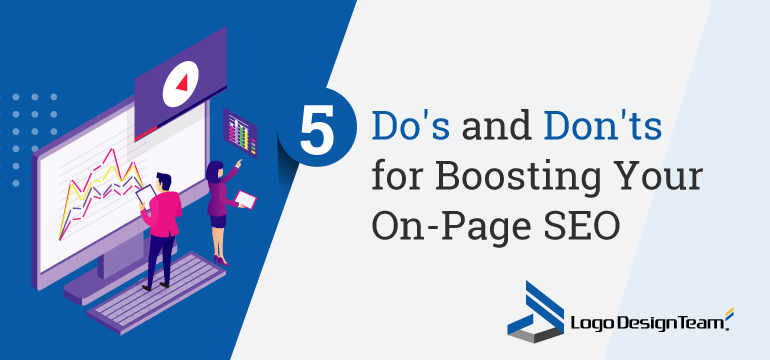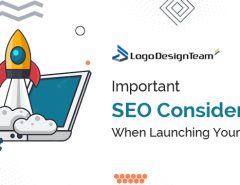Most marketers have a love-hate relationship with search engine optimization (SEO). Colleges are still lagging behind on the SEO front, meaning marketers aren’t equipped with the skills to utilize SEO techniques to their fullest. It also doesn’t help that SEO changes constantly.
Love it or hate it, SEO is here to stay and accounts for most of your organic traffic. More than 51% of all visitors will find your site via search engines, so an SEO strategy is a must if you want to attract more customers. When done right, SEO can rapidly grow your business.
Despite its positives, SEO can still be difficult to understand. In this article, we’ll look at strategies that are still effective and dismantle myths that are holding your business back.

Image Source: Pexels
How to Use On-Page SEO to Rank Higher on Search Engines
On-page SEO covers tactics you’ll use to help search engines understand your content and rank. With a free rank tracker, let’s look at how you can use on-page SEO to ensure your customers find you.
1. Do: Stay Consistent With Your SEO Efforts
Some businesses will stop investing in SEO because it doesn’t seem to work. Whether you’re a marketing savant or a newbie, SEO can seem incredibly complicated or not worth the effort. Your SEO strategy can be even harder to fix if you don’t know what went wrong or how to improve.
But before you start up a traditional ad campaign, ask yourself when you began implementing your SEO strategy. According to Andrew Raso from Online Marketing Gurus, it can take three to six months to see any tangible performance from a well-designed SEO campaign.
If your campaign is anything less than optimized, it’ll take you even longer to see results. You’ll know your campaigns aren’t up to snuff if you’re in one of the following situations:
- Google has changed its practices, making your previous campaign outdated.
- You have unrealistic expectations for how fast your campaign should work.
- You’re targeting the wrong audience, and/or your audience has changed.
- You give up too soon, or you’re not sure how to continue your campaign.
- You only pay attention to SEO tactics, not how these tactics work within your strategy.
- You’re not aware of how Google ranks your page or what they look for.
- You don’t have a web strategy that works for your brand across all platforms.
If you’re doing everything right, but you still aren’t seeing results, stay consistent. A consistent SEO content marketing strategy is the best thing you can do to promote your brand. For agencies looking to scale their services without additional overhead, leveraging white label SEO solutions can be an effective strategy. While SEO does take some time to get off the ground, you’ll see results that can’t be duplicated with ads.
However, if you don’t have the time to stay up on your SEO strategy, seek help from industry professionals, like Online Marketing Gurus. This agency can conduct a full SEO audit on your website and social media channels and create a custom marketing strategy that works for you.
2. Don’t: Rely On Paid Search Alone
Although paid search falls more into the “off-page” SEO category, it’s important to touch on why SEO is often more effective than ads. It’s common for businesses to forgo SEO for a paid search strategy, but that’s a huge mistake, especially for B2B and SaaS companies.
Paid search is the process of paying for website and social media platform visibility. Banner ads, pay-per-click (PPC) ads, and affiliate marketing are all under the umbrella of “paid search.”
Most businesses still use PPC ads exclusively because they don’t have to pay for the ad until someone clicks on it. Paid search can offer several benefits for a company, including:
- Fast results, especially for time-sensitive content
- More control over ad performance
- Focused audience targeting
- Detailed analytics
- Higher ROI in the short-term
While paid search can be effective for new businesses, medium-sized and enterprise companies will see their cost per customer acquisition metric rise rapidly. Not only are ads more expensive over time, but they also become less effective the bigger your company becomes.
While paid search has its place in SEO, you shouldn’t rely on it. Marketers should try to build their SEO strategy in the background while also utilizing paid search to bring in their first thousand viewers. This way, you can reduce ad spending and focus on your SEO strategy.
3. Do: Include the Basics, Like Internal Linking, Images, and Keywords
When it comes to SEO, keywords and internal linking strategies are the backbone of your strategy. Keywords help your visitors find you, while internal links keep your visitors on the page.
Developing a keyword strategy can be difficult, so follow these best practices:
- Make a list of relevant keywords based on what people know about your business.
- Use a mix of short-tail keywords and long-tail keywords to expand your reach.
- Research-related keywords. For example, “Photography” and “Photo.”
- Include the target keyword in the first 100 words of your content.
- Use your target keyword multiple times, but don’t stuff your content.
- Place your keyword in your content’s URL, and try not to change it.
Building backlinks to your site from other websites is an essential component of off-page SEO, but your website should also include internal links to the rest of your content. As mentioned, internal links keep visitors on your website, which reduces your bounce rate.
An internal linking structure can also lead your customers to the end stage of the buyer’s journey. This tactic is especially effective for industries with low conversion rates.
Finally, don’t forget about images. Web pages with at least one image significantly outperform pages without any photos. However, you need to add alt text to your images to act as a placeholder if it doesn’t load and to ensure Google crawls for your alt-text keywords.
Even if images had nothing to do with SEO, high-quality photos can add to your visitor’s experience. Images break up the sea of text, making your content easier to read. You can also use images to promote your brand further or provide context for your articles.
4. Don’t: Neglect User Experience
In the past, you used to be able to stuff keywords into your page and rank number one on search engines. Now, Google takes hundreds of factors into account when ranking pages, including elements of user experience (UX), and won’t rank sites that fail in the UX category.
If your page is difficult to navigate, doesn’t include quality content, or lacks a competent mobile experience, your users will leave and never come back. It’s too risky to ignore user experience.
Here are some common website elements that impact SEO and user experience:
- Headings
Headings are used to separate text, but you need to use a logical structure to rank. There should only be one H1 in your article, and all H3s should follow H2s. You should include the target keyword in your H1 and at least one of your H2s. - Site Structure and Navigation
Your users should be able to find the articles on your site quickly and easily. A clean sight navigation and structure may lead to certain site links appearing underneath your Google search results, resulting in more traffic. - Website Speed
It’s estimated that 55% of visitors spend less than 15 seconds on a website. If your page loads slower than that, they’ll take their business elsewhere. - Website Design
Your customers will distrust your brand and your website if it looks like it was made in the 90s. Updating your website can bring more customers to your site. - Mobile Experience
After Google released its mobile-friendly update in 2015, website owners have had to ensure their site works well on mobile devices. Your site’s text, images, and menu have to look good on all devices, no matter how small.
SEO and UX go hand-in-hand in creating a website experience that both search engines and your human visitors will enjoy.
5. Do: Create Title Tags and Meta Descriptions
Meta descriptions and title tags are valuable elements in web content.
A title tag is an HTML code that gives a web page its title. Also known as a “meta title,” title tags hold a lot of weight and are one of the most important on-page ranking factors. When you search for any topic on a search engine, the meta title will serve as the hyperlink to a blog post.
Since title tags are the first thing most people see before they click on your website, your audience will use them to determine if your content is worth clicking on.
To use title tags effectively:
- Use unique titles for every page
- Include your target keyword at least once
- Make your titles 50-60 characters, or they’ll be cut off
- Add modifiers, like “best,” “free,” or the current year
Meta descriptions are also seen by your viewers on search engines. That small, two-sentence paragraph you’ll see below the meta title is the meta description. To optimize your meta descriptions, you should follow the same advice used for title tags except for the length.
Meta descriptions should be 140-160 characters and include a call-to-action (CTA). Your CTA should entice visitors to click on your article or learn more about your business.




